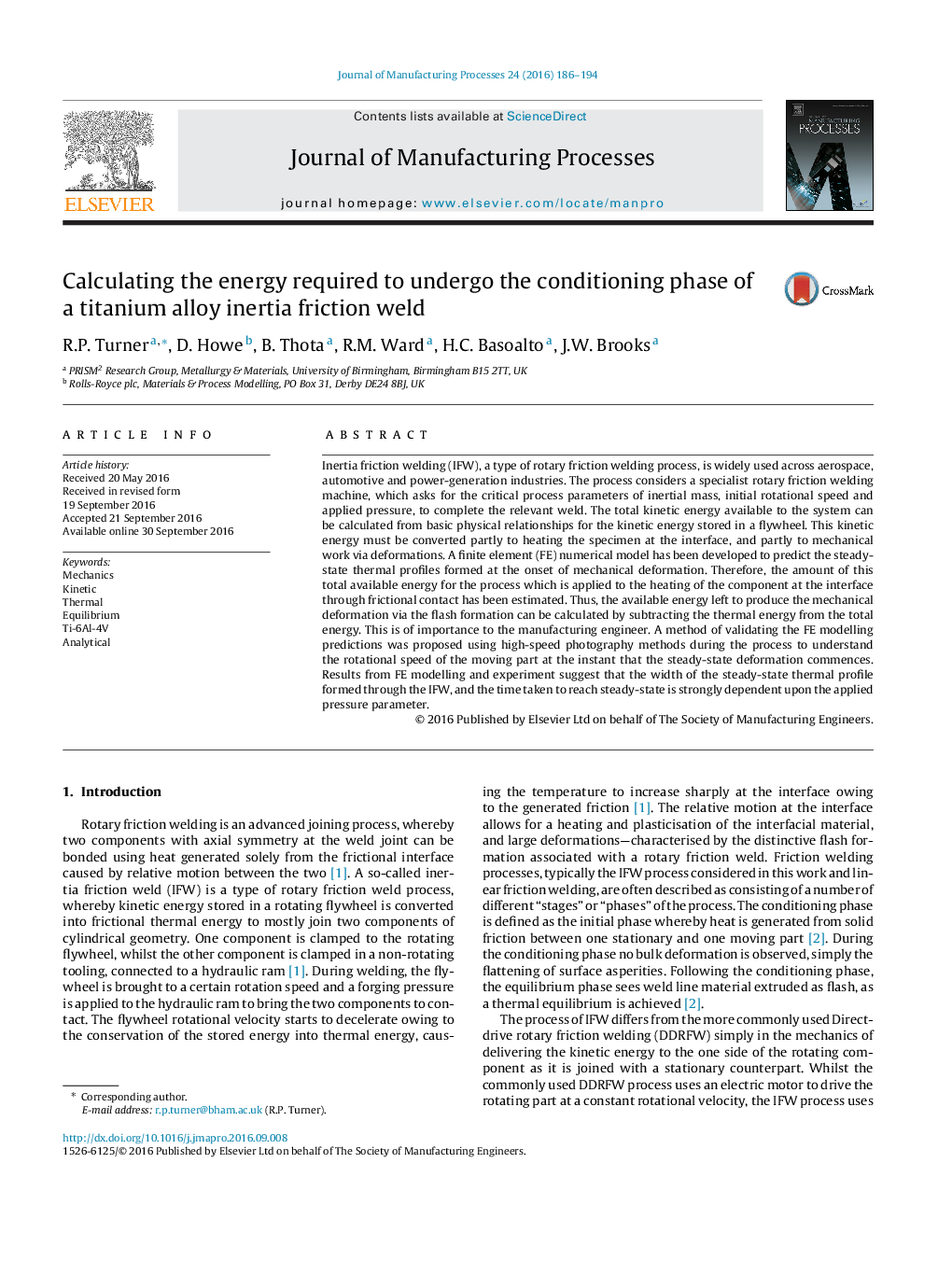| Article ID | Journal | Published Year | Pages | File Type |
|---|---|---|---|---|
| 6481510 | Journal of Manufacturing Processes | 2016 | 9 Pages |
Inertia friction welding (IFW), a type of rotary friction welding process, is widely used across aerospace, automotive and power-generation industries. The process considers a specialist rotary friction welding machine, which asks for the critical process parameters of inertial mass, initial rotational speed and applied pressure, to complete the relevant weld. The total kinetic energy available to the system can be calculated from basic physical relationships for the kinetic energy stored in a flywheel. This kinetic energy must be converted partly to heating the specimen at the interface, and partly to mechanical work via deformations. A finite element (FE) numerical model has been developed to predict the steady-state thermal profiles formed at the onset of mechanical deformation. Therefore, the amount of this total available energy for the process which is applied to the heating of the component at the interface through frictional contact has been estimated. Thus, the available energy left to produce the mechanical deformation via the flash formation can be calculated by subtracting the thermal energy from the total energy. This is of importance to the manufacturing engineer. A method of validating the FE modelling predictions was proposed using high-speed photography methods during the process to understand the rotational speed of the moving part at the instant that the steady-state deformation commences. Results from FE modelling and experiment suggest that the width of the steady-state thermal profile formed through the IFW, and the time taken to reach steady-state is strongly dependent upon the applied pressure parameter.
Graphical abstractDownload high-res image (134KB)Download full-size image
